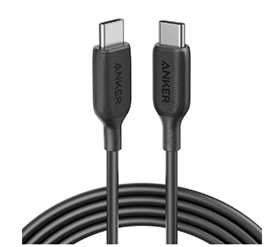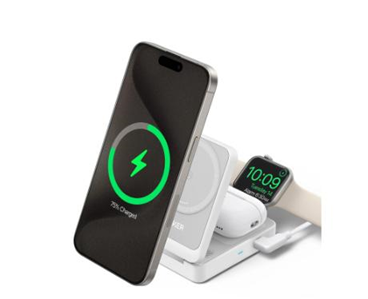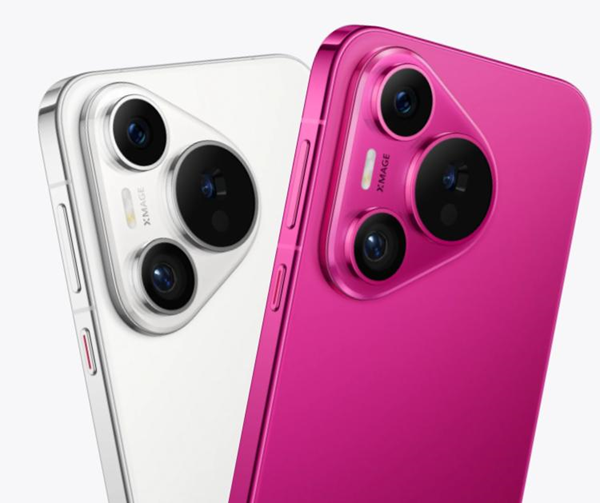USB-C
cables have revolutionized the way we transfer data, offering unprecedented
speed and efficiency. These modern connectors are designed to handle high-speed
data transfers, making them a superior choice over older USB types. By
understanding the features and benefits of USB-C cables, you can maximize your
data transfer efficiency and enhance your overall device performance. In this
article, we'll explore why usb c cables are faster, what features make them efficient, how they improve
data transfer rates, and their advantages over traditional cables.

Why Are USB-C Cables Faster?
USB-C
cables are renowned for their speed, a significant improvement over previous
generations of USB cables. The key to their enhanced speed lies in their design
and the technology they employ.
USB-C vs. USB-A: Speed Comparison
USB-C
cables support higher data transfer rates compared to USB-A. While USB-A 3.0
can transfer data at speeds up to 5 Gbps, USB-C 3.1 and 3.2 can reach up to 10
Gbps and 20 Gbps, respectively. This substantial increase in speed allows for
faster file transfers, which is crucial for professionals dealing with large
files. Additionally, USB-C cables are designed to be more versatile, supporting
various protocols and improving overall efficiency.
Technical Advancements in USB-C
The
technical advancements in USB-C cables include improved power delivery,
allowing devices to charge faster while transferring data. USB-C cables can
handle up to 100 watts of power, making them suitable for charging laptops and
other power-hungry devices. Moreover, USB-C cables incorporate advanced signal
integrity technologies, reducing interference and ensuring stable data transfer
rates. These advancements make USB-C cables a reliable choice for high-speed
data transfer needs.
What Features Make USB-C Efficient?
Several
features contribute to the efficiency of USB-C cables, making them a preferred
option for modern data transfer and device charging needs.
Reversible Connector Design
One
of the most notable features of USB-C cables is their reversible connector
design. Unlike previous USB connectors, which require a specific orientation,
USB-C connectors can be plugged in either way. This feature eliminates the
frustration of trying to insert the connector correctly, saving time and
reducing wear and tear on the ports. The reversible design also enhances the
durability of both the cable and the devices it connects to, contributing to
longer-lasting equipment.
Enhanced Power Delivery
Enhanced
power delivery is another crucial feature of USB-C cables. These cables can
support up to 100 watts of power, making them capable of charging larger
devices such as laptops and monitors. This high power capacity allows for
faster charging times, which is beneficial for users who need to charge their
devices quickly. Additionally, USB-C cables support power delivery protocols
that enable efficient power management, ensuring that devices receive the
optimal amount of power without overheating or overloading.
How Does USB-C Improve Data Transfer Rates?
USB-C
cables significantly improve data transfer rates through higher data bandwidth
and compatibility with the latest protocols.
Higher Data Bandwidth
USB-C
cables offer higher data bandwidth compared to older USB standards. With USB
3.1 and 3.2, these cables can transfer data at speeds up to 10 Gbps and 20
Gbps, respectively. This high bandwidth capability is essential for
transferring large files quickly and efficiently, such as high-resolution
videos and complex software packages. The increased bandwidth also supports
simultaneous data transfer and charging, making USB-C a versatile solution for
modern technology needs.
Compatibility with Latest Protocols
Another
advantage of USB-C cables is their compatibility with the latest data transfer
protocols. USB-C supports protocols such as Thunderbolt 3 and 4, which offer
even higher data transfer speeds and enhanced functionality. Thunderbolt 3, for
instance, can achieve speeds up to 40 Gbps, making it ideal for tasks that
require rapid data transfer, like video editing and large-scale backups. The
compatibility with these advanced protocols ensures that USB-C cables can meet
the demands of current and future technology.
USB-C Benefits Over Traditional Cables
USB-C
cables offer numerous benefits over traditional cables, making them a superior
choice for both data transfer and power delivery.

Multifunctionality and Versatility
One
of the standout benefits of USB-C cables is their multifunctionality. These
cables can handle data transfer, power delivery, and video output
simultaneously, reducing the need for multiple cables. This versatility
simplifies device connectivity, especially for laptops and mobile devices,
which often have limited port availability. Additionally, the ability to
support various functions makes USB-C cables an ideal choice for creating a
streamlined and efficient workspace.
Future-Proof Technology
USB-C
cables are designed with future-proof technology, ensuring they remain relevant
as technology evolves. Their compatibility with emerging standards and
protocols means they can adapt to new devices and technologies without needing
frequent replacements. Investing in USB-C cables is a smart choice for users
who want to ensure their accessories remain compatible with the latest
advancements in technology. This future-proof aspect of USB-C cables makes them
a valuable investment for both personal and professional use.
Conclusion
USB-C cables have transformed data transfer and device charging, offering unparalleled speed, efficiency, and versatility. Their advanced features, such as higher data bandwidth, enhanced power delivery, and compatibility with the latest protocols, make them a superior choice over traditional cables. By understanding and leveraging the benefits of USB-C cables, you can enhance your data transfer efficiency and future-proof your technology setup. For high-quality USB-C cables, consider exploring options from reliable brands like Anker, which offer a range of products designed to meet your data transfer and charging needs. Discover more about the best USB-C cables.



